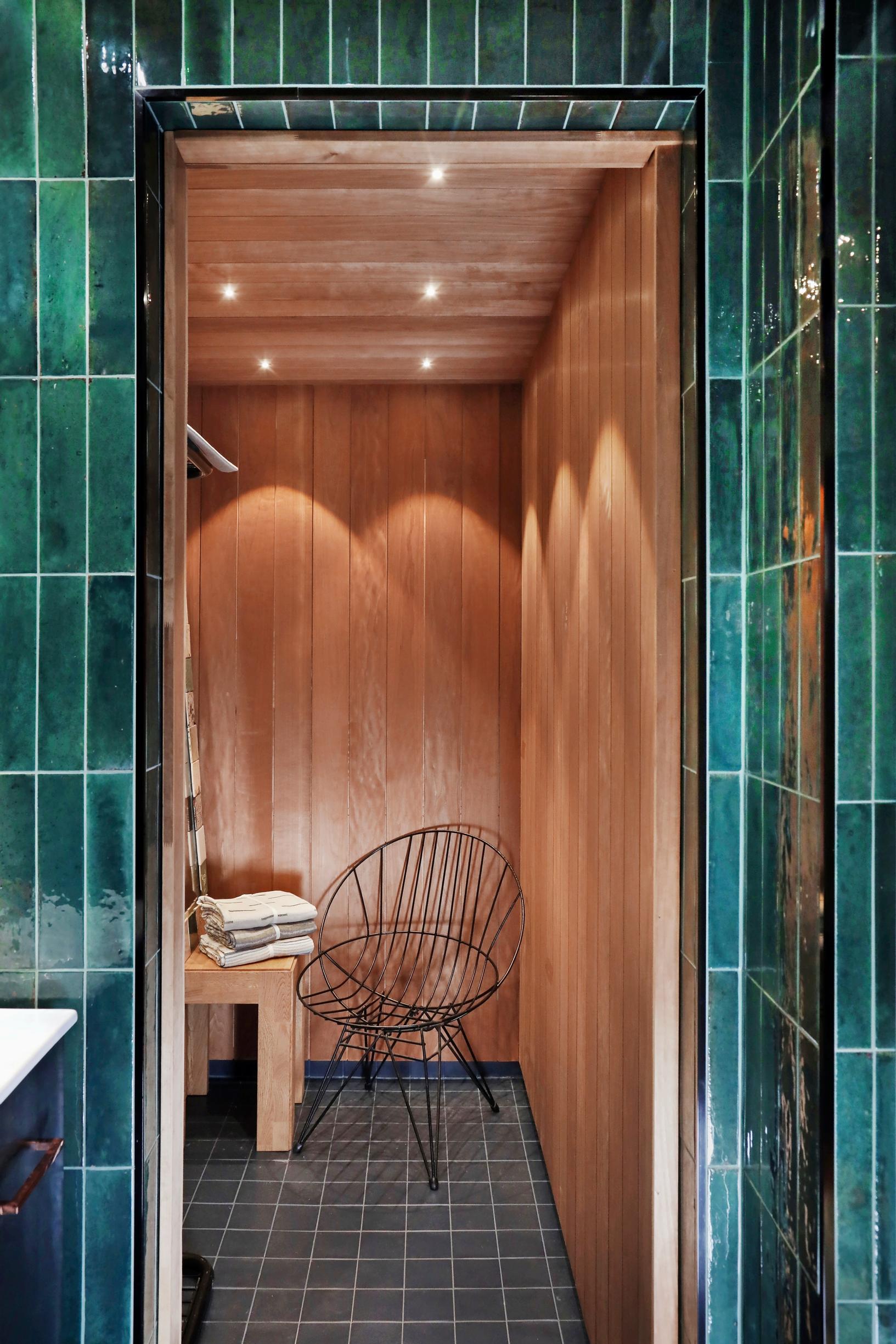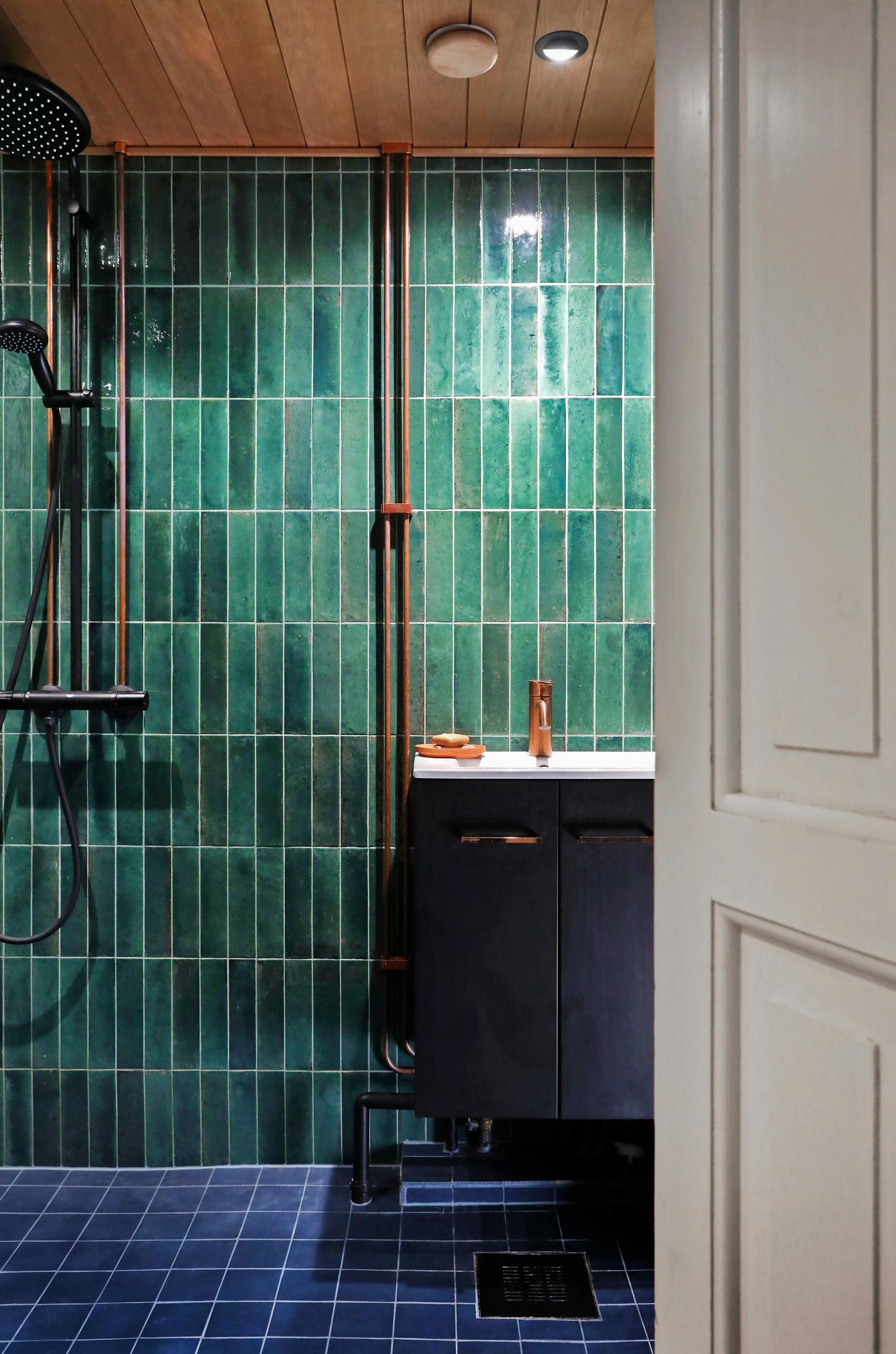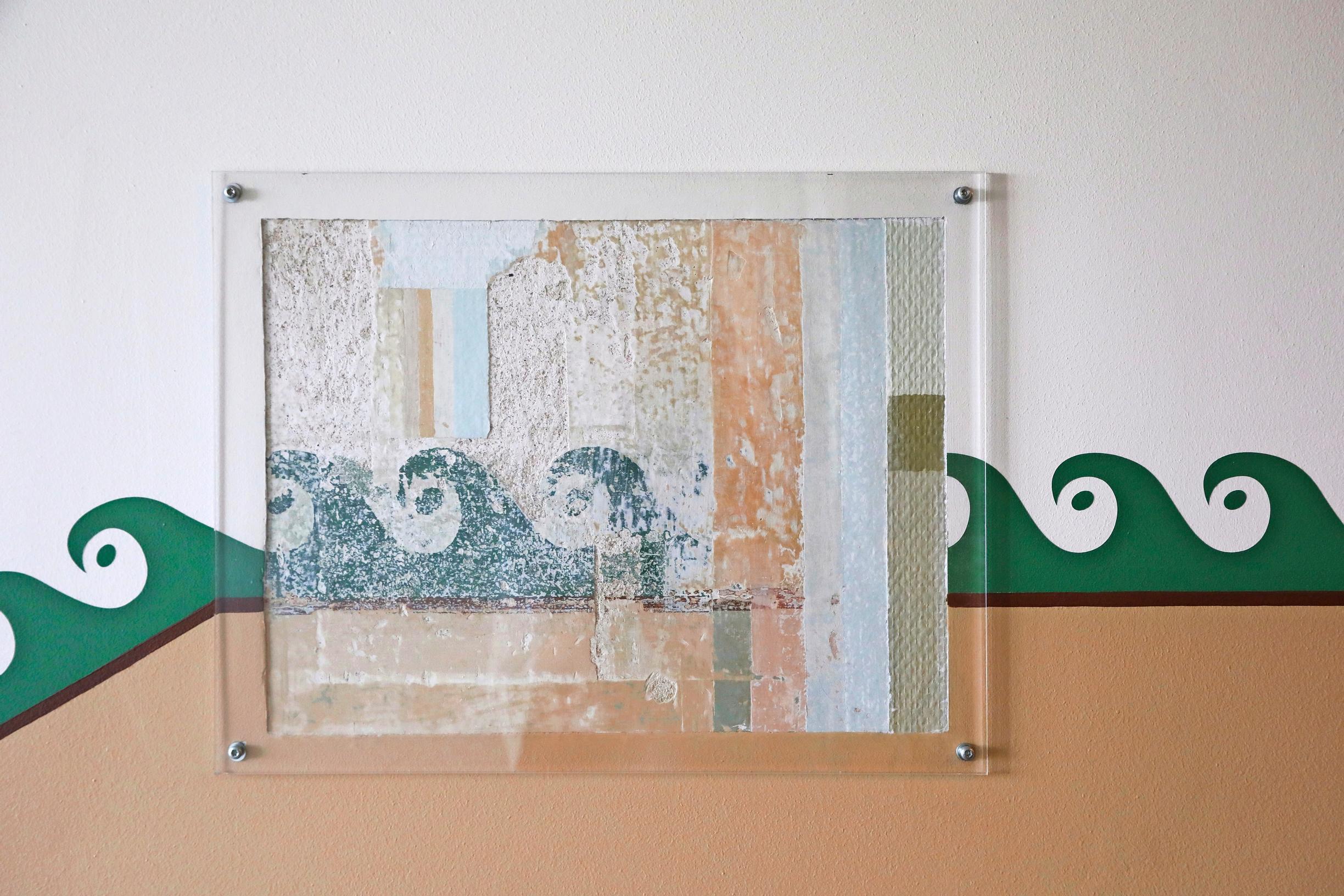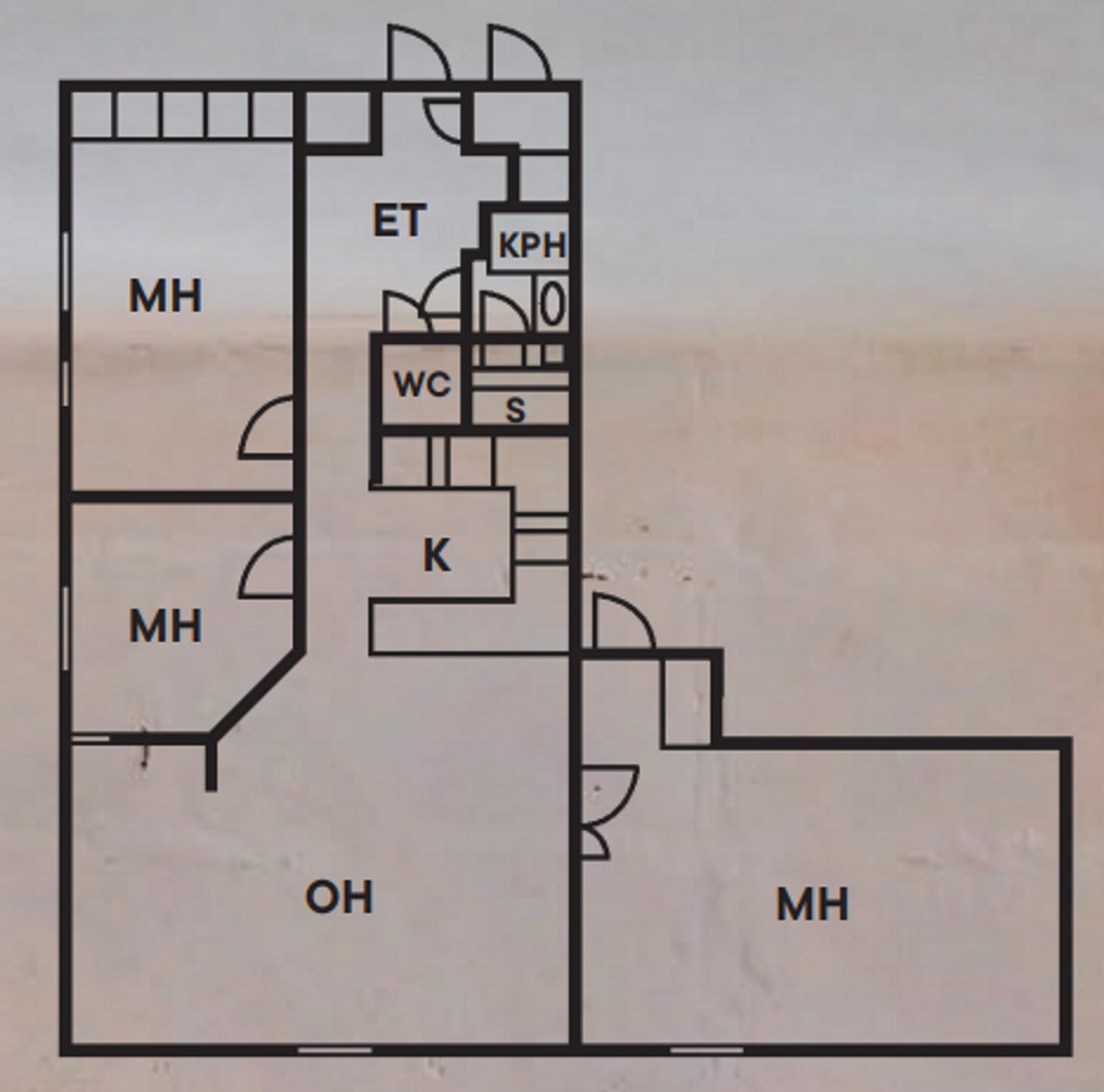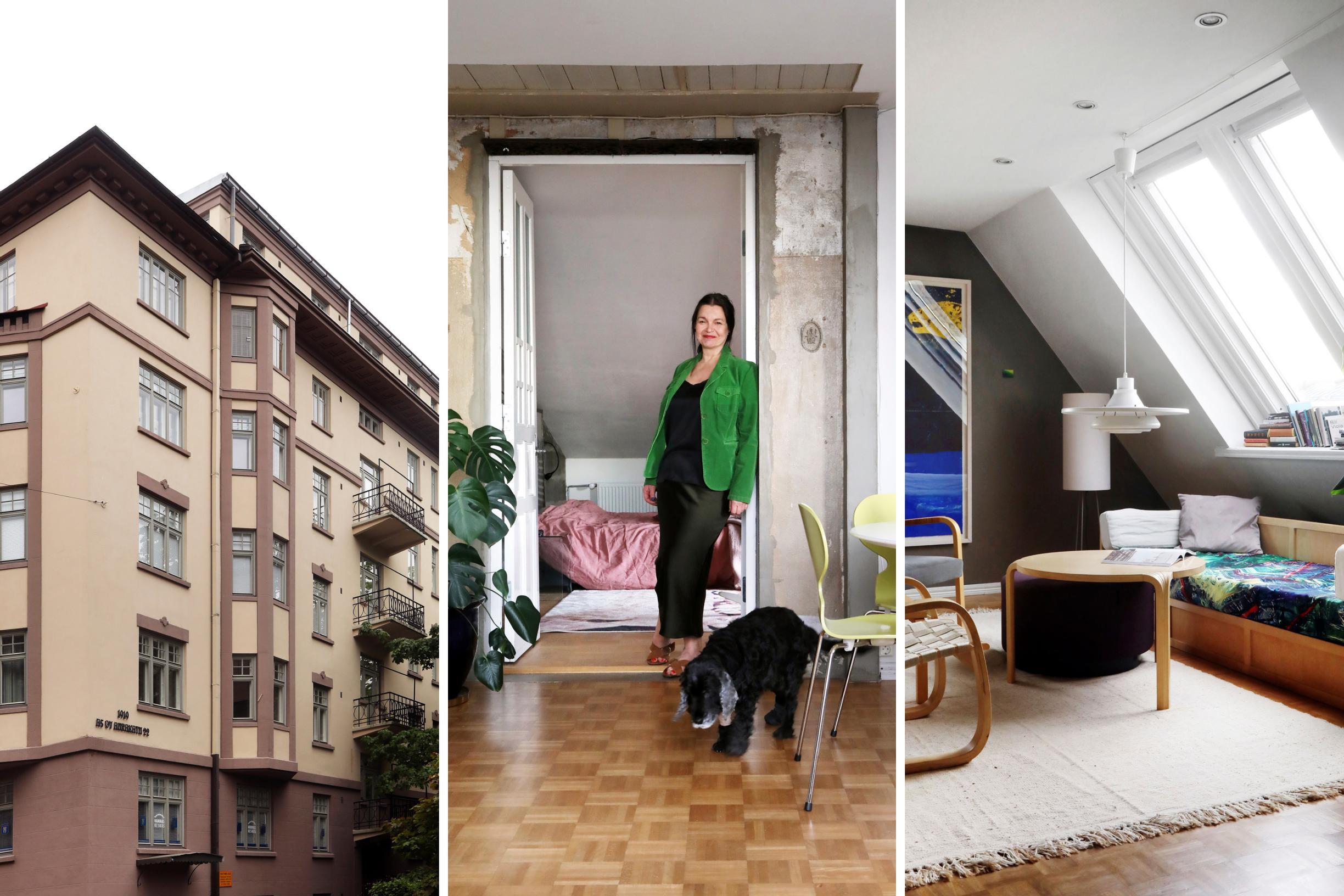
A princess once lived here: step inside Mari’s attic in Turku’s iconic jugend block
Finnish Mari Krappala’s attic apartment has served both as a cozy family nest and a city home for an art professional. Once the children grew and needed an extra room, the solution was found right next door: Mari expanded her home into unheated attic storage spaces.
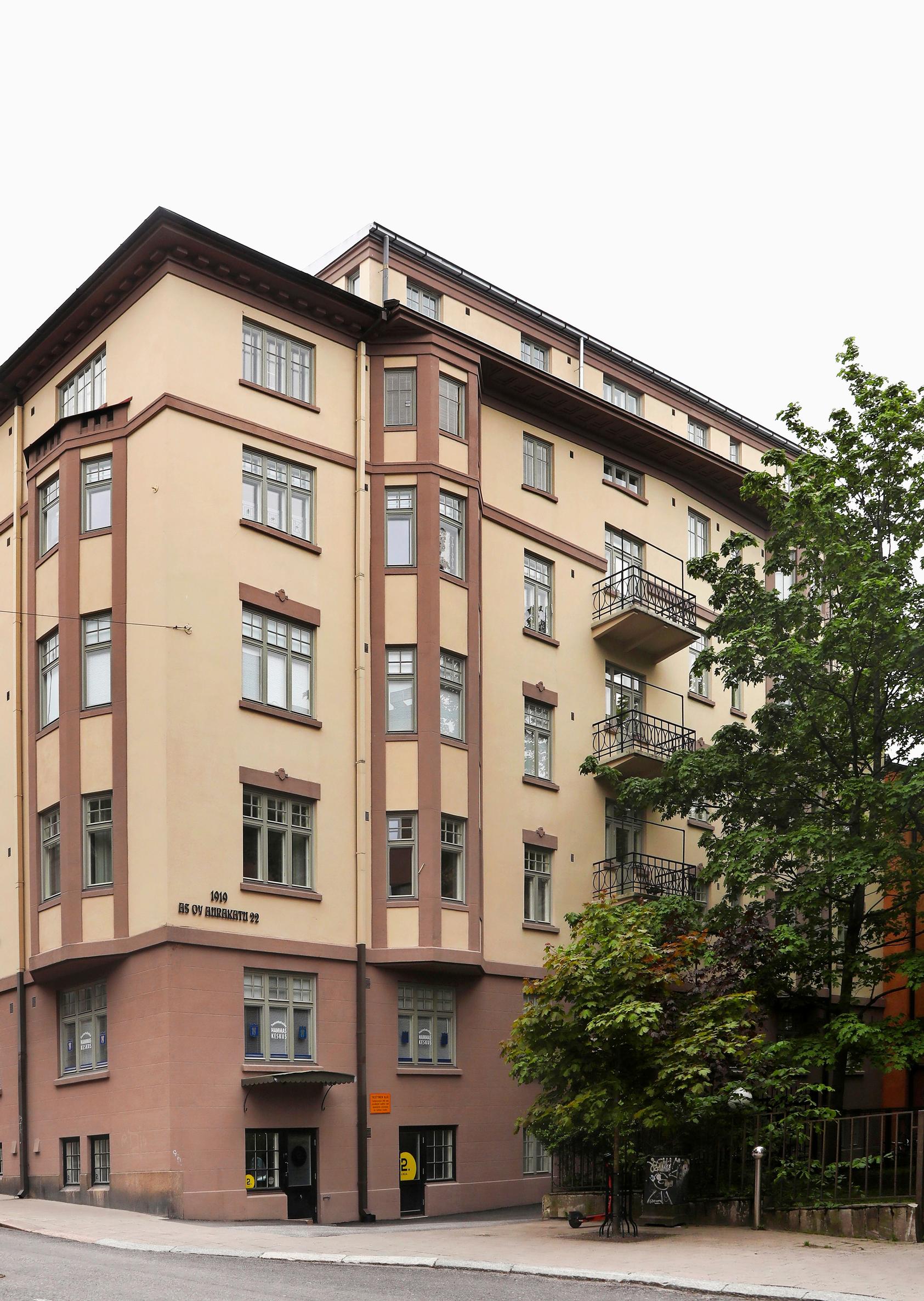
Residents An art researcher and docent at Aalto University Mari Krappala, 56, and cocker spaniel Fanny. The adult daughters Cecilia, 24, and Ofelia Pahlman, 21, no longer live at home.
Home An attic apartment in a building from 1919, designed by architect J. O. Laiho in Turku’s city center. The apartment is 102 square meters (about 1,100 square feet).
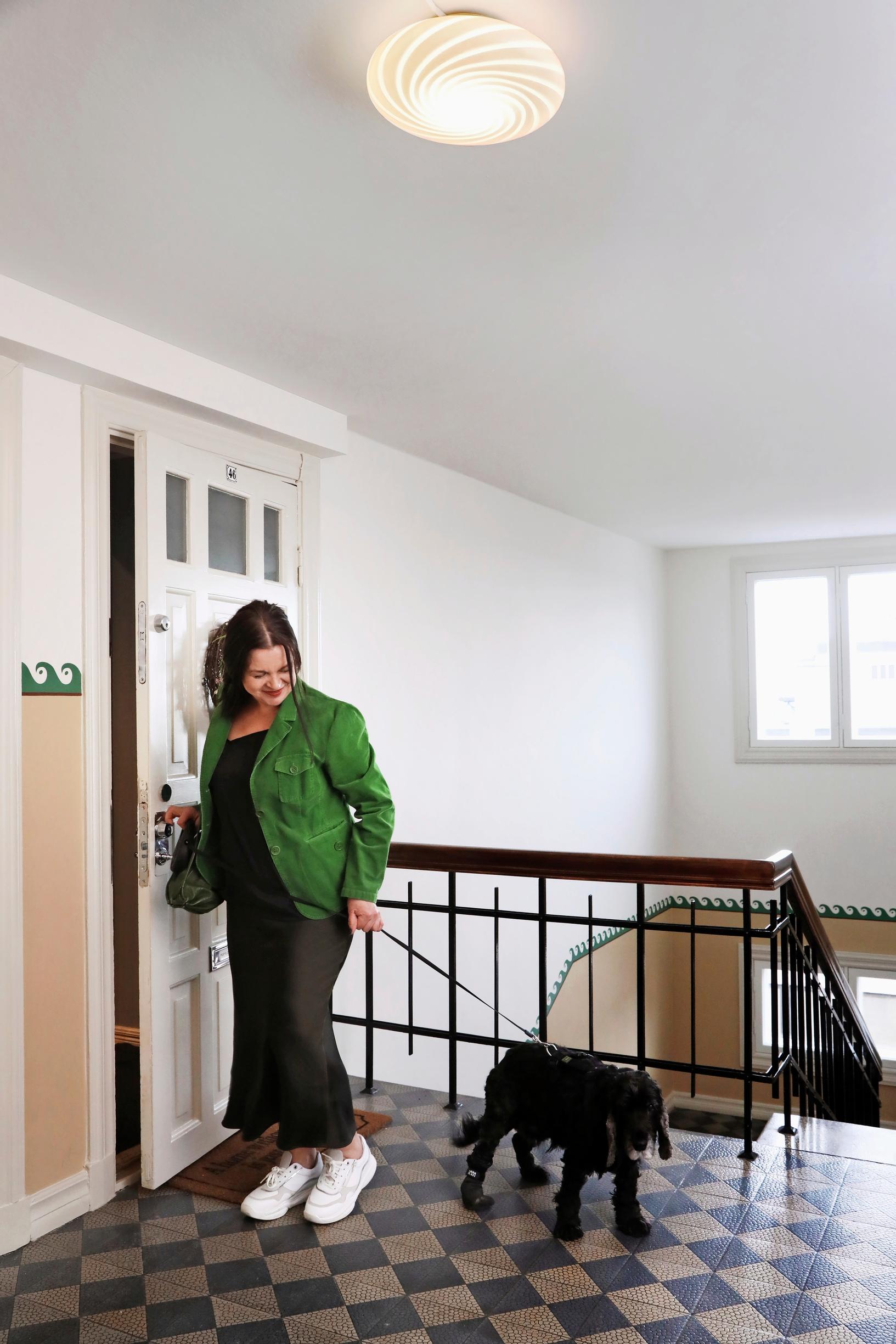
Mari Krappala stands by the window of her attic home. The view over Turku’s rooftops evokes Paris, except instead of the Eiffel Tower, you can see the Vartiovuori Observatory on the horizon. Mari moved to Turku from Helsinki in 2006 with her two young daughters, Cecilia and Ofelia. Her main criterion for the home was that the children’s school had to be close by. That was almost perfectly realized: the school is within sight, just across the street.
Mari was especially drawn to the apartment’s location in the attic of the building, not to mention the building’s multifaceted history. The property, located in block No. 21 known as Bikupan (meaning “Beehive”), was designed in 1919 by architect J. O. Laiho. Owing to the construction era, the building’s style is a mix of jugend and neoclassicism.
The plot was donated by a wealthy Turku-based industrialist and inventor Juho Tapani. The condition for the donation was that construction would use Tapani’s invented and patented reinforced concrete slab. This slab, known as the Tapani slab and containing coke slag as extra insulation, was used only briefly in construction, but over time it has proven durable and remains an intriguing chapter in Finland’s architectural history.
Over the years, several notable figures have lived in this building. One of them was Princess Elisabeth zu Sayn-Wittgenstein-Berleburg and her daughter, Princess Paraskewa. Due to unrest and the looming revolution in Russia, they relocated to Turku, and once the stone building at the address Aurakatu 22 was completed, the princess and her daughter lived there for 15 years. The family’s bank accounts had been seized in Russia, so to make ends meet, they had to sell their jewelry and other possessions. They also gave French and German lessons.
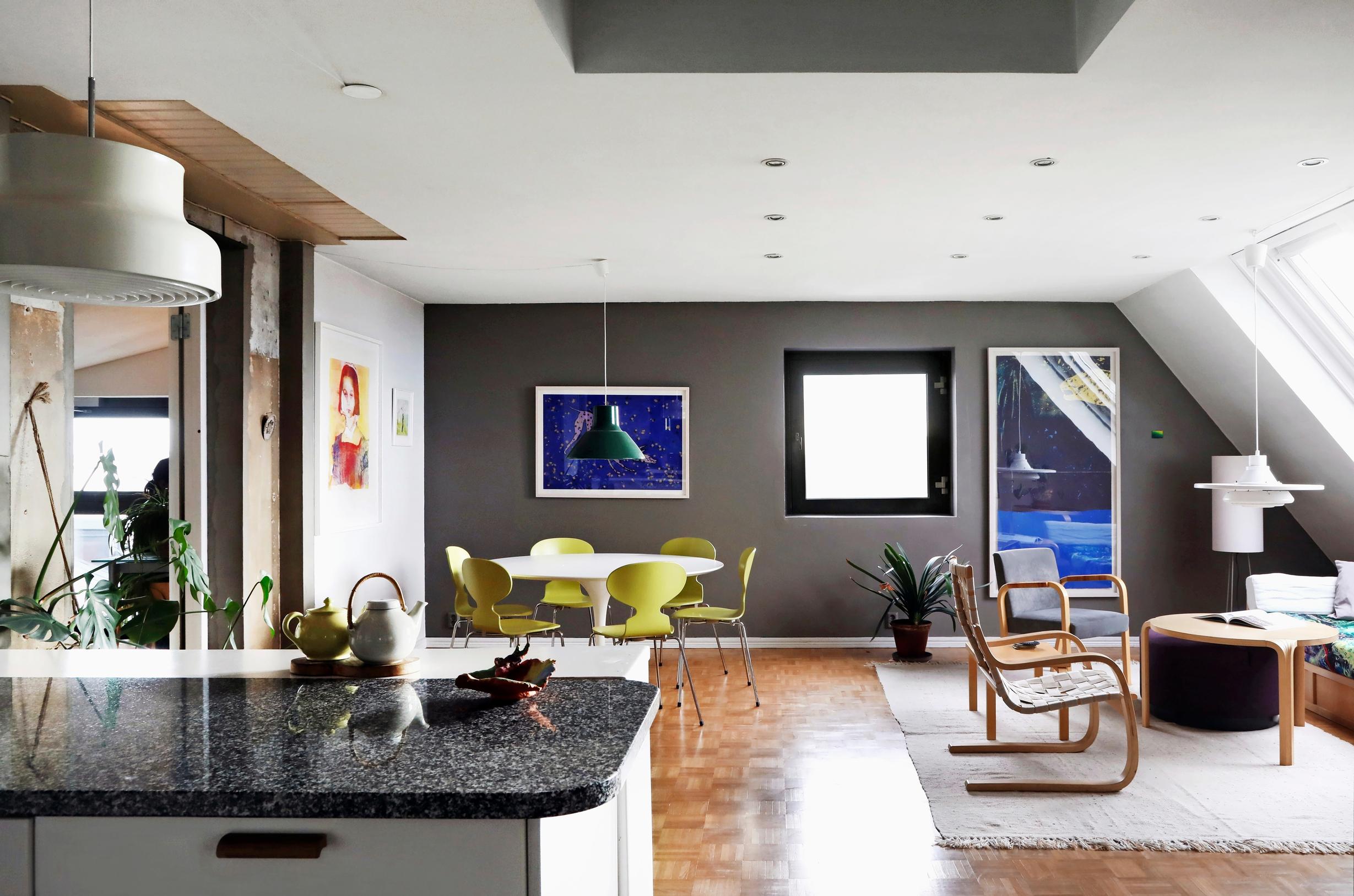
There are also intriguing figures in Mari’s home story. In the 1950s, the artist Katri Vihervaara admired the lofty views, and later the actor Kalle Juurela. In the 1970s, two apartments were combined into one large unit. Much water has flowed in the River Aura since then, and today the attic is a spacious home with a special role for art.
Mari has also implemented some modifications to the apartment.
“I wanted more windows in the apartment. In an urban setting, the process took time because we needed permits from several authorities. Then we had to find a builder who was willing and able to install them. Once the job was done, it was wonderful to gaze outside with the girls. It felt like the whole world opened up in a new way,” Mari recalls.
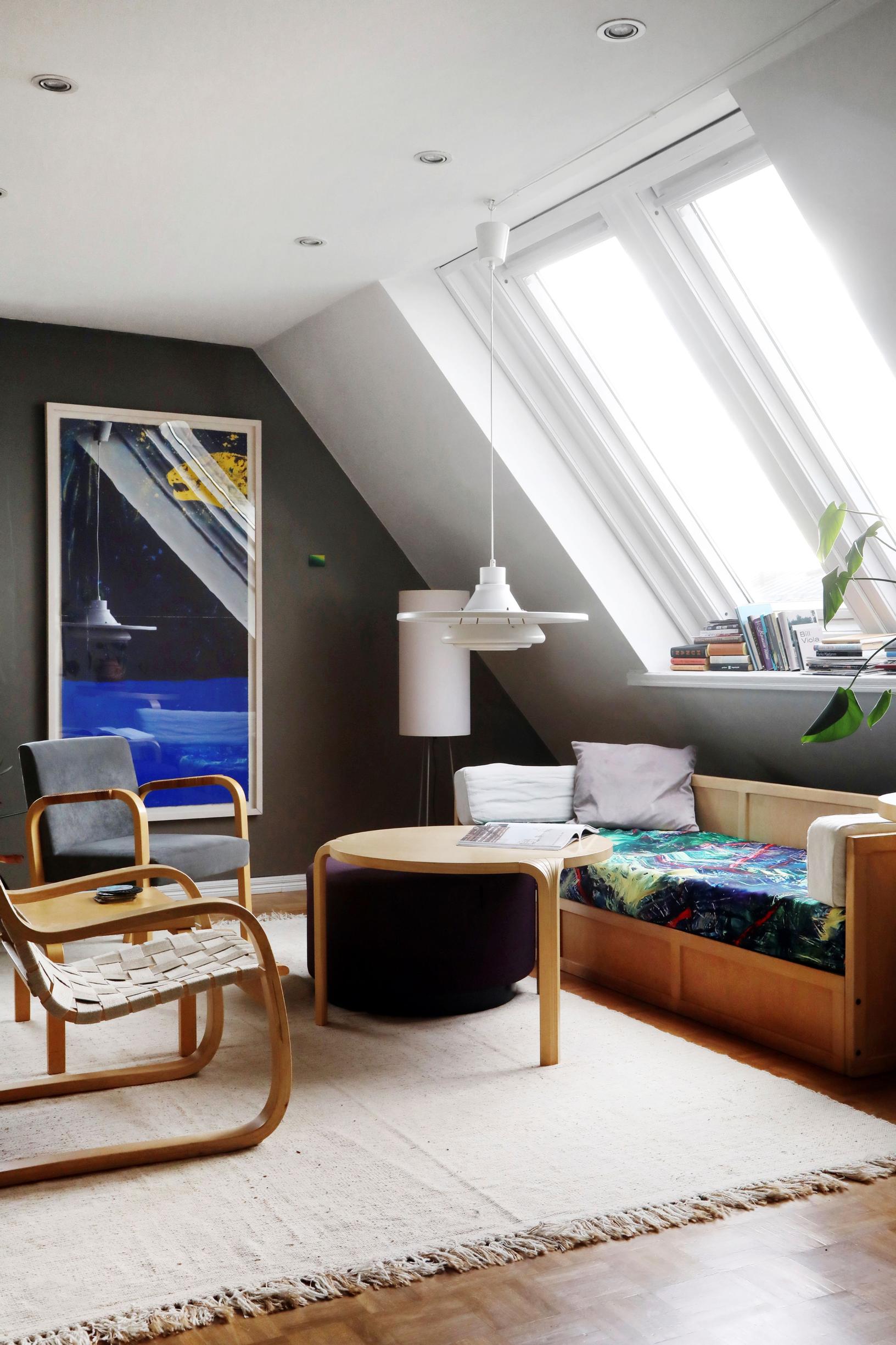
Home renovations have been done in phases, always considering the family’s needs. As the children grew older, a bunk bed was no longer suitable, and they either needed to find one more room somewhere or move out. The solution was discovered behind an adjacent wall, where the housing company owned unheated attic space.
Mari was able to purchase enough space for two attic storage units, and together with her children and architect Pia Helin, she designed a room for Cecilia. In addition to a slanted ceiling and a floor-to-ceiling window, what makes the room intriguing is that it has its own exterior door leading off of the attic corridor.
Little sister Ofelia got a hammock in her room as consolation. That cheerful promise turned into its own construction project, because the ceiling structures couldn’t support the weight of the hammock, so they needed a metal frame attached along the walls.
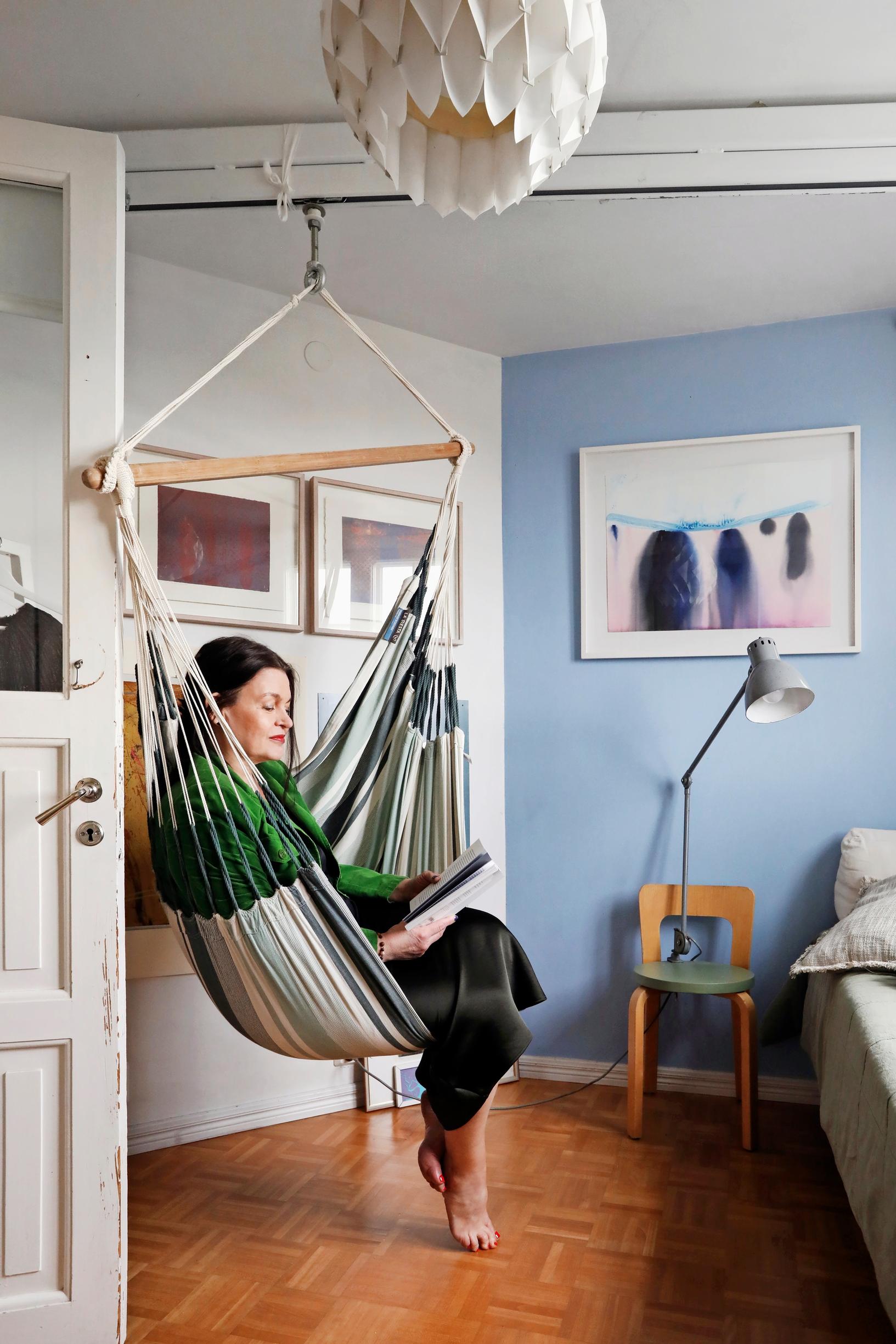
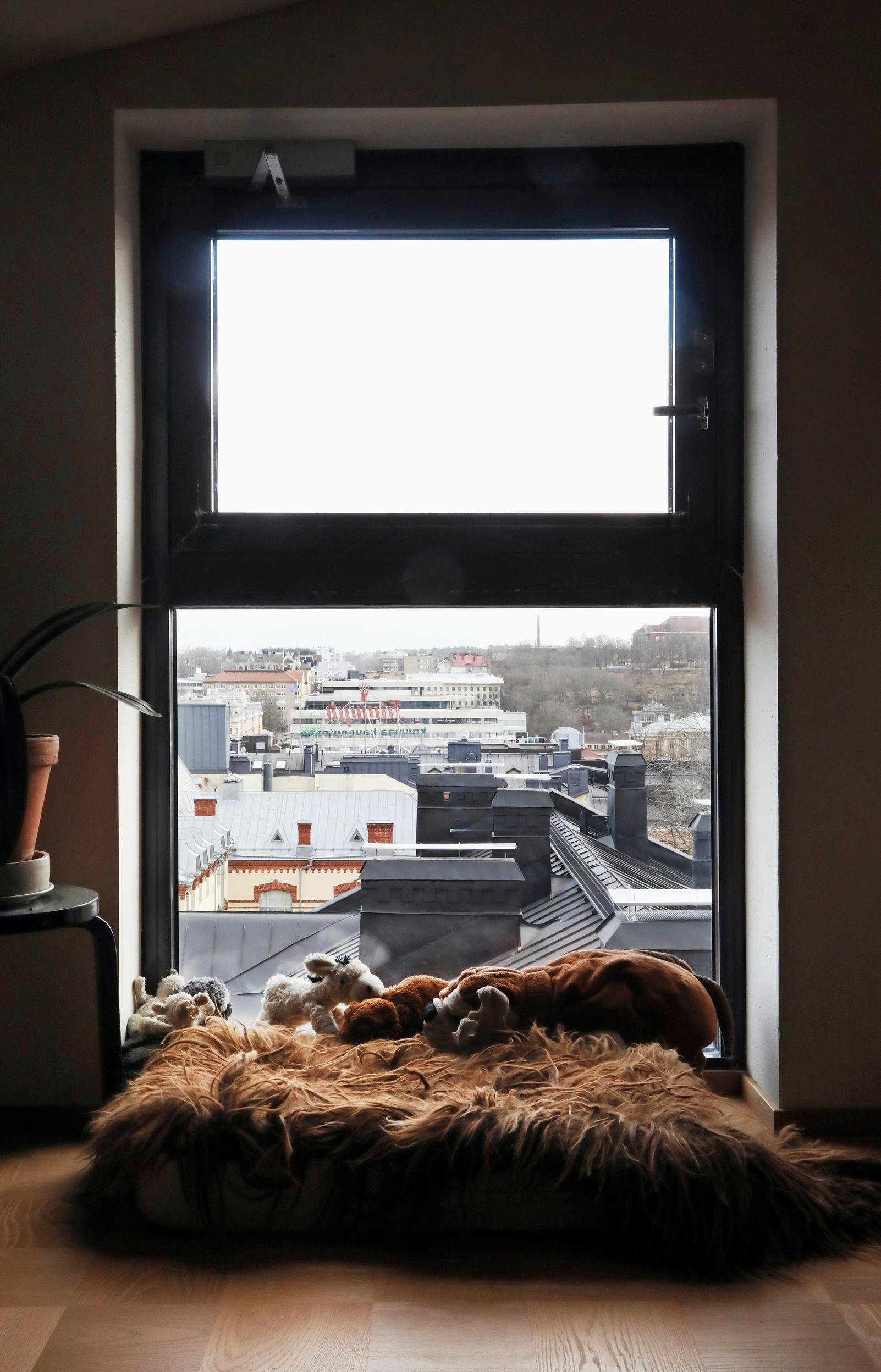
Mari creates an interior design style that strikes a balance by mixing modern pieces with vintage finds.
“Surprising combinations, even discordant ones, can be fun, and it’s pleasant to live in the midst of them. Variety and experimentation liven things up. Often, guests who come over start redecorating. I still haven’t figured out what sparks this.”
Sometimes, when Mari wants to say goodbye to a certain feeling or state of mind, she has a ritual for it:
“I let go of a piece of furniture. It clears out not only the corners but also my mind. Sometimes an empty space is the best thing there is. And on the wall, a piece by a cherished artist friend, the light, and the gentle hum of the city.”
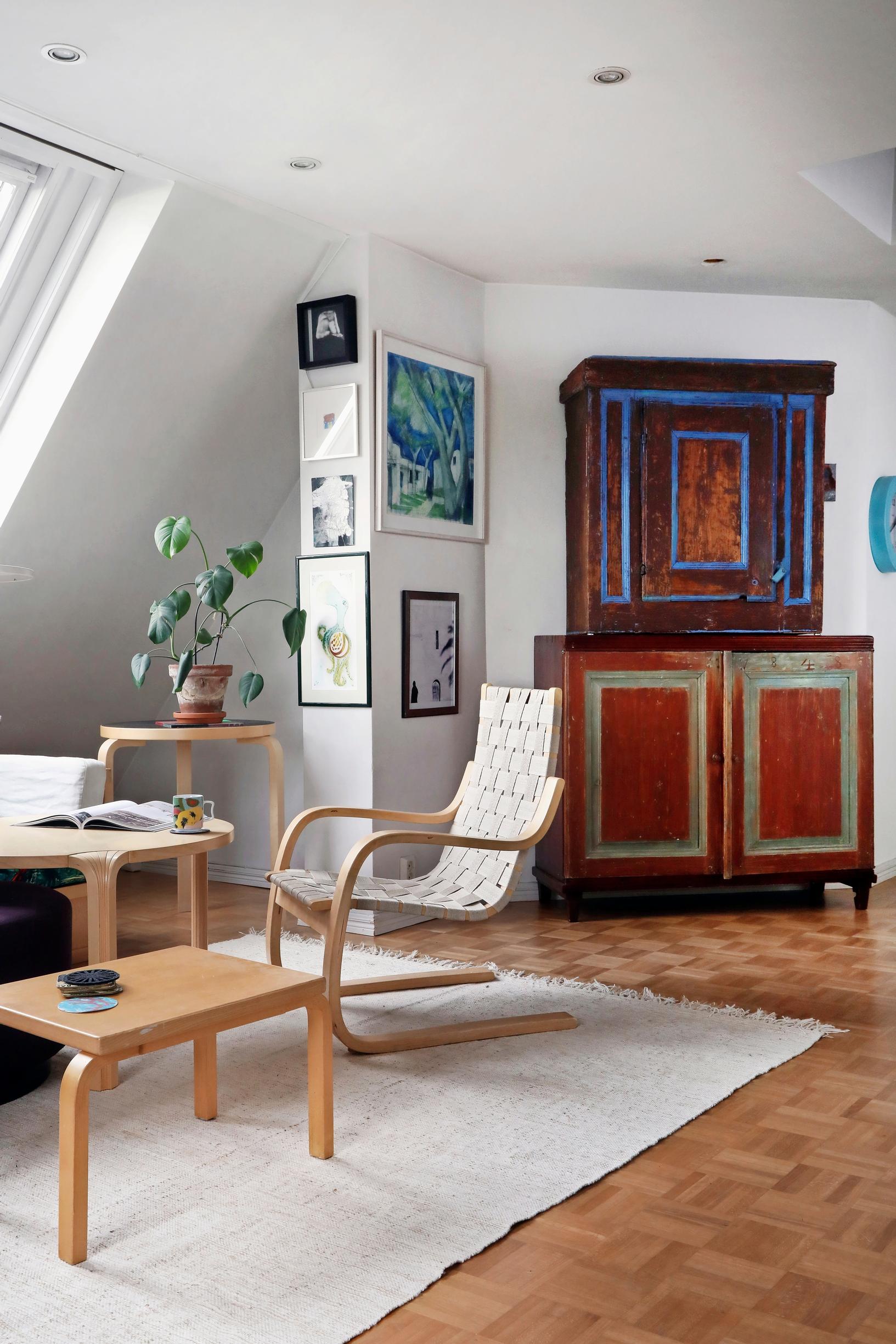
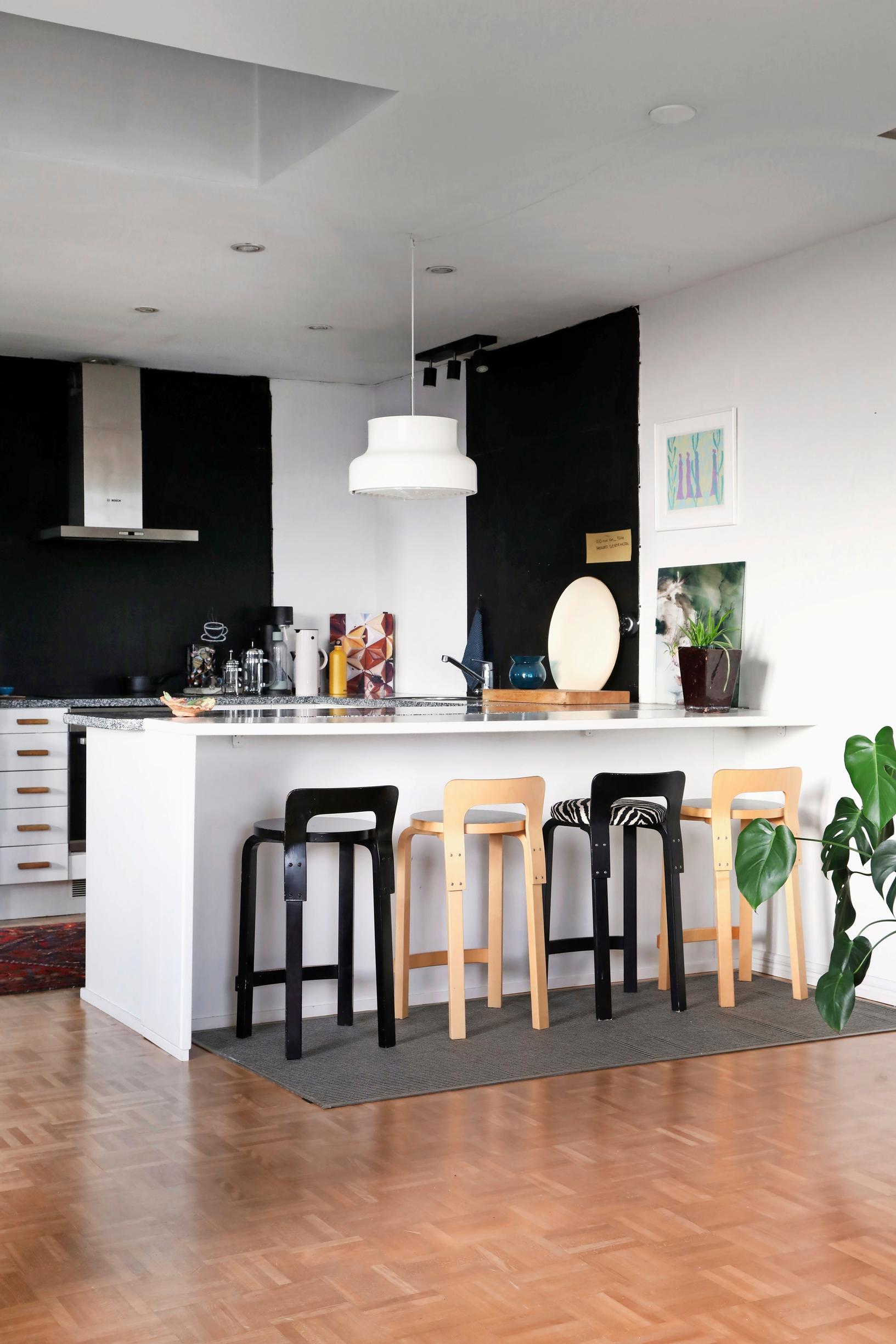
The home features Alvar Aalto’s furniture from three different generations, and it still travels between the five households in the family from time to time. When Mari, Cecilia, and Ofelia moved to Aurakatu, they bought Aalto’s round table and carried it from the Artek store across the Market Square to their new home.
For this home, Mari finally acquired Eero Saarinen’s Tulip table, which she had dreamed about since childhood. Otherwise, the home’s furnishings are made up of old treasures brought in from Mari and her daughters’ rural house. They bring a touch of antiques and family history to the home.
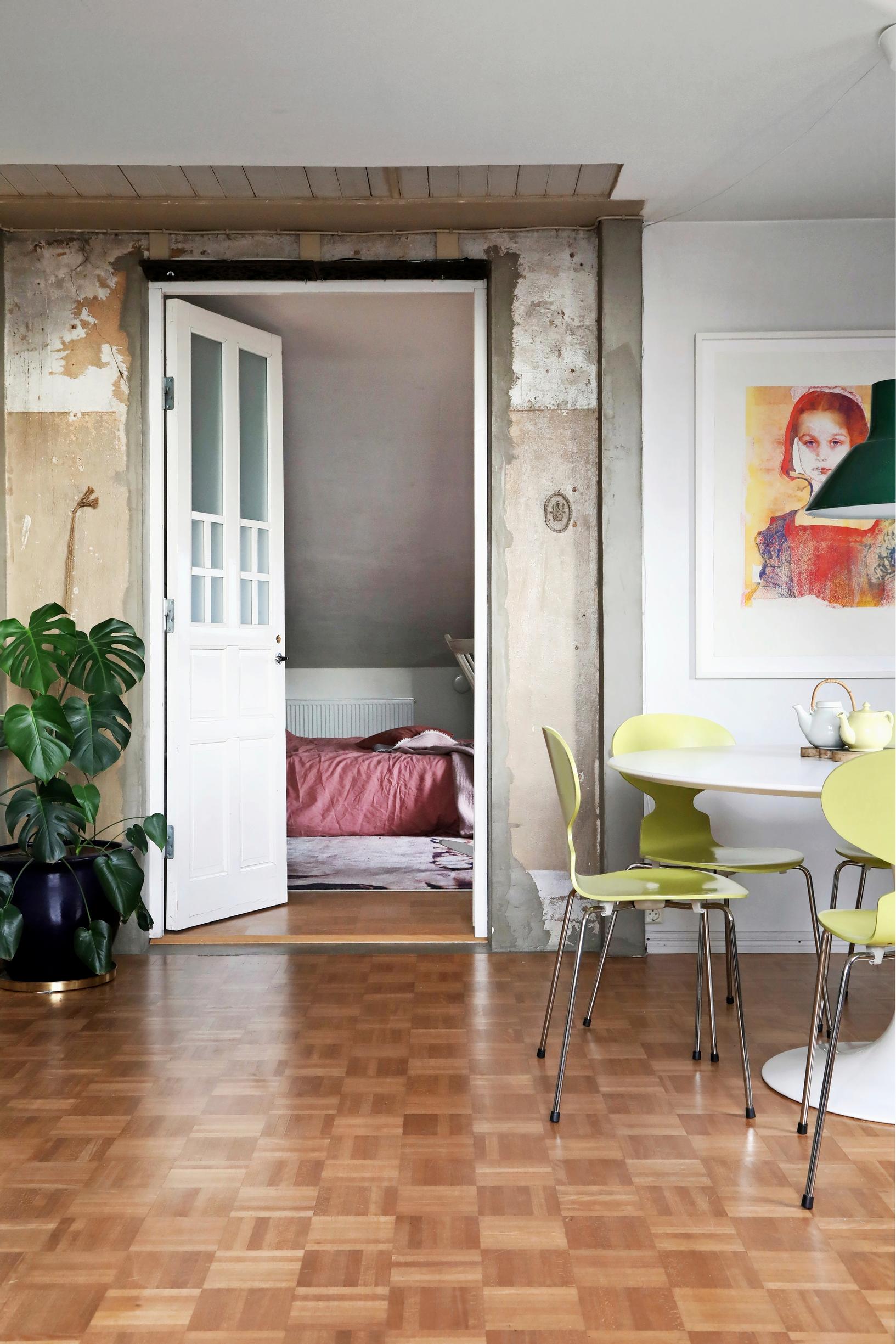
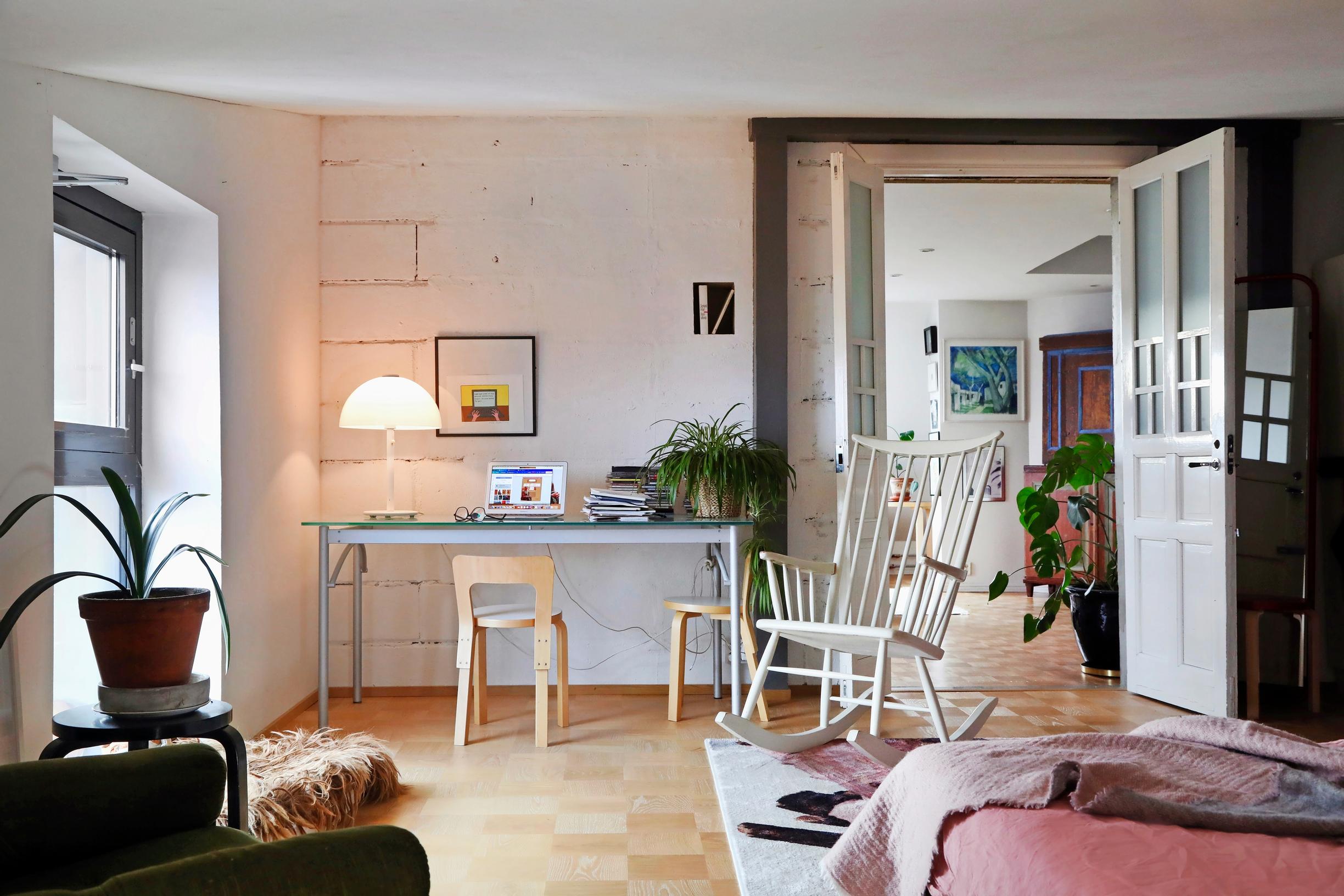
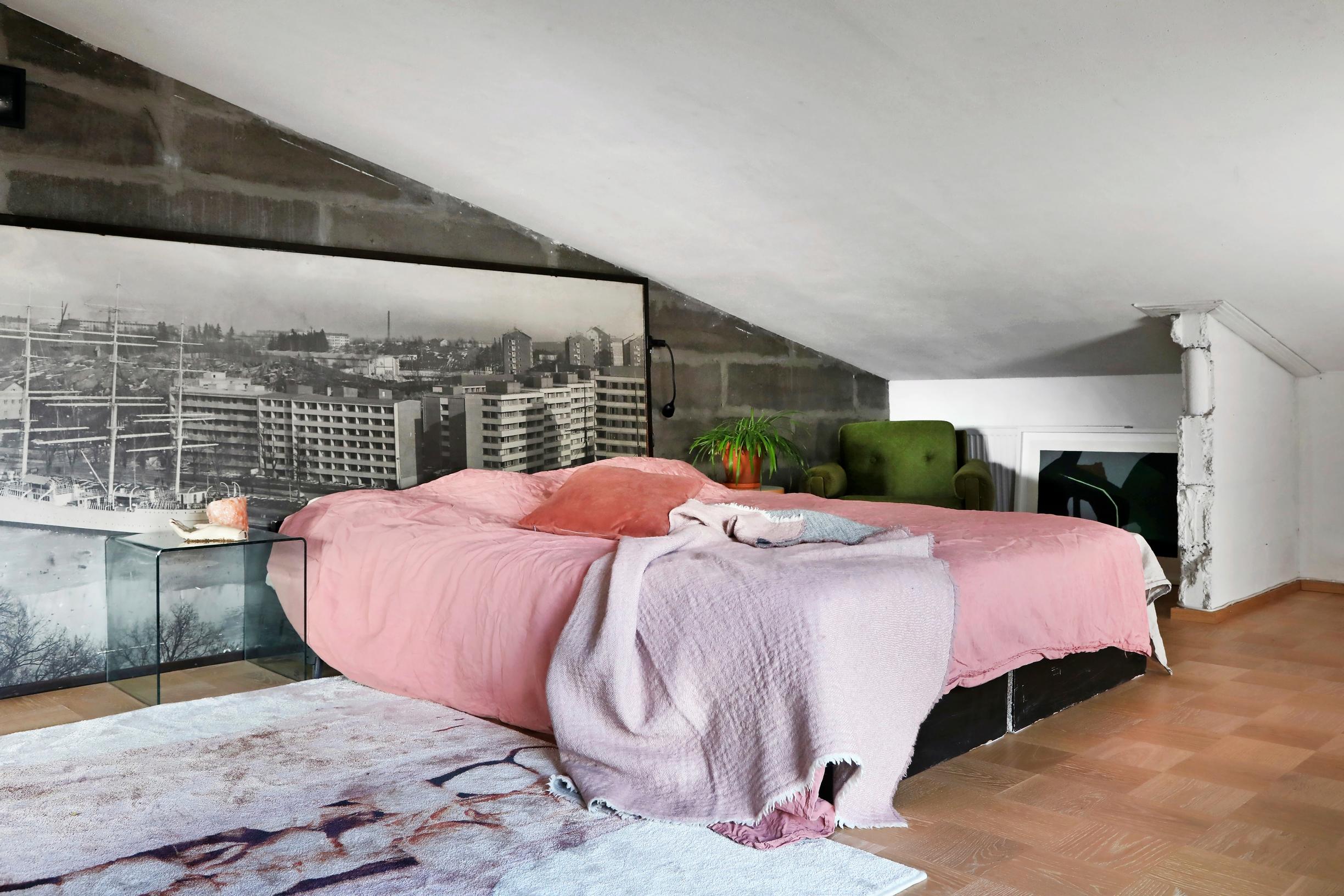
Art is a strong presence throughout the home—even in surprising forms.
“As both a co-owner and expert at Ponsian, I’ve been developing a concept that integrates contemporary art into architecture. In my home, there are a few material experiments that we curated together with Joanna Laajisto. With the artists’ permission, they include snippets from works by Finnish contemporary artists.”
The building, protected by the Finnish Heritage Agency, has been restored to its original look in various areas such as the staircases, and Mari has been involved in the planning. The original colors and the decorative ornaments around the walls have now been reintroduced.
Cecilia and Ofelia have already moved out, but Mari still loves living above the rooftops of Turku. You can step straight into the urban bustle from her front door, and essential services are close by.
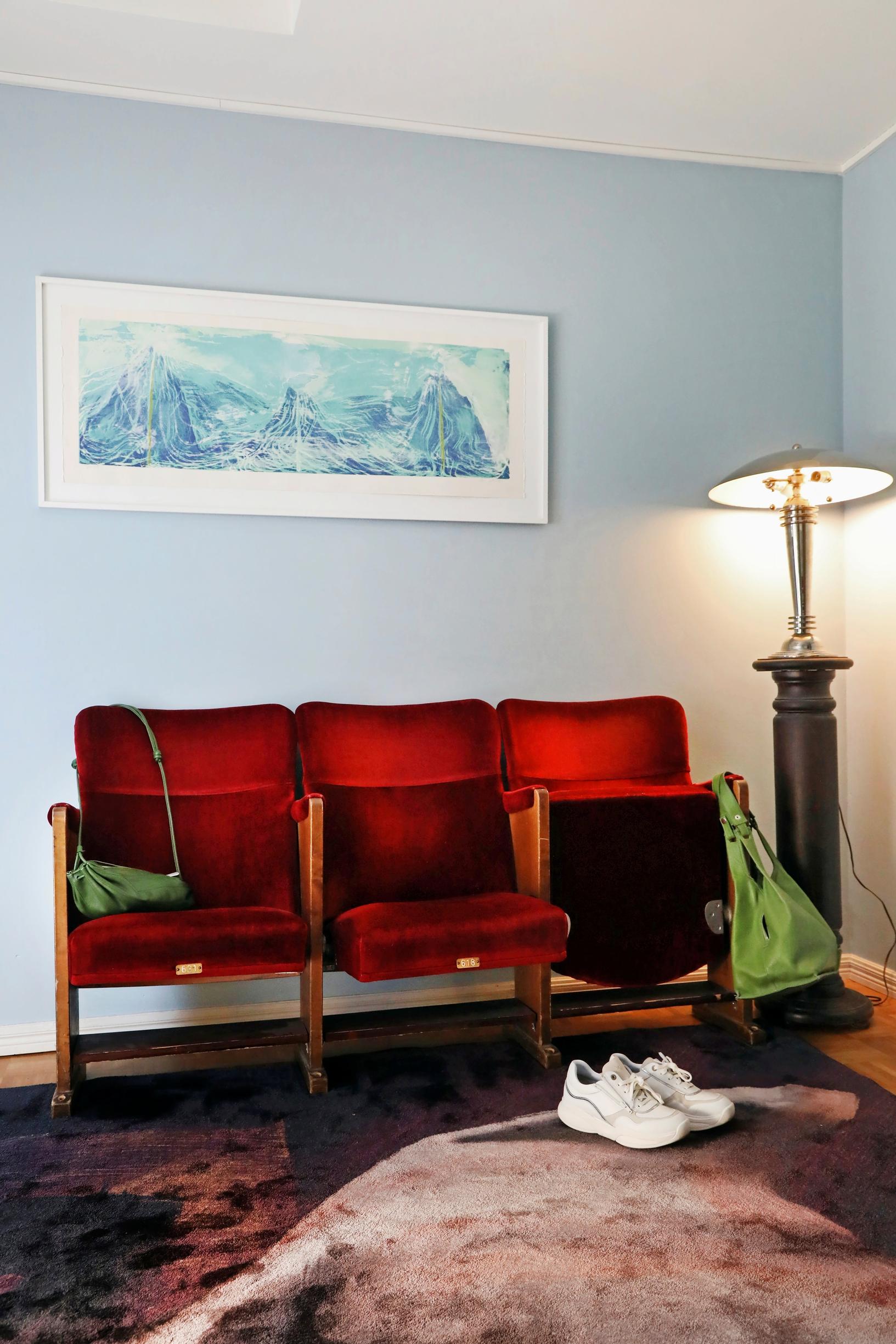
“Letting go of a piece of furniture clears out both corners and the mind. Sometimes an empty space is the best thing there is.”
